What should you know about CRIPSR?
By Kristen Intemann, Professor of Philosophy, Department of History & Philosophy
May 28, 2019
Advancements in genome editing

DNA
CRISPR/Cas9 is a genome editing tool that may lead to several exciting applications, such as new ways to cure diseases, the development of more sustainable materials, and the ability to adapt our crops to the changing conditions of climate. It has tremendous promise to address pressing social needs. Of course, like any emerging technology, it also carries certain risks and uncertainties. Caution must be exercised so that this technology can be developed and utilized in responsible ways.
What is CRISPR and how does it work?
CRISPR is an acronym for “Clustered Regularly Interspaced Short Palindromic Repeats,” which are the signature characteristic of the immune defense system in bacteria.
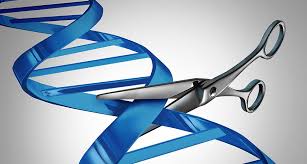
A guide RNA directs Cas9 to edit DNA, like molecular scissors. Wildpixel/i-stock image.
More importantly, it is a tool that allows scientists to edit part of the genome of any living organism by deleting, adding, or altering sections of the DNA sequence. CRISPR or, more accurately, the CRIPSR/Cas9 system consists in two main molecules. Cas9 is a protein that operates as sort of a “molecular scalpel,” which can cut out part of our DNA. The second key is a piece of pre-designed guide RNA that is designed to find and bind to a particular sequence in the DNA that is to be edited. The guide RNA is what guides the protein to “cut” in the right place in the genome. Scientists can use this to delete some problematic part of genetic code, such as a mutation that causes a particular disease. They can also introduce a new gene to replace the old using the cell’s natural repair mechanisms. CRIPSR-Cas9 is one CRISPR, but there are others that utilize different proteins other than Cas9.
CRISPR research at MSU
Blake Wiedenheft, Associate Professor of Microbiology and Immunology at MSU, and his lab have played an
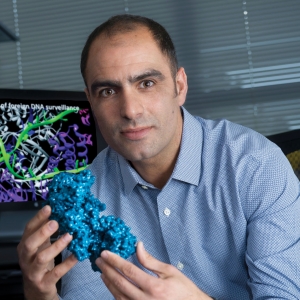
Blake Wiedenheft, Department of Microbiology & Immunology. Photo by Kelly Gorham.
important role in advancing CRISPR research. He completed a post-doctoral fellowship the University of California, Berkeley, in the lab of Jennifer Doudna, whose team is credited with inventing CRIPSR. CRISPR was discovered not by researchers aiming to further genome editing, but by those (like Wiedenheft) who were studying the adaptive immune systems of bacteria that somehow manage to fight off viruses. At MSU, Wiedenheft’s research led to discovery of the first crystal structure of the CRISPR-associated complex for antiviral defense (Cascade). While much of his research is focused on how viruses subvert the bacterial immune system, he has also worked to refine CRISPR tools to repair defective genes that cause genetic diseases, such as muscular dystrophy and cystic fibrosis.
Why is CRISPR revolutionary?
Gene editing is not new – but CRISPR technology is exponentially faster, cheaper, and more precise than previous methods. It is enabling greater, rapid, advancement of research in genetic engineering.
Why is CRISPR so promising?
Fighting diseases

CRISPR engineered CAR T cells attacking a cancer cell in mice. Image: Prasad Adusumilli / Memorial Sloan Kettering
CRISPR is being used in a variety of research programs aimed at fighting or preventing diseases, including cancers, HIV, Huntington’s disease, and Alzheimer’s.[1] The first U.S. clinical trials in humans are now underway. Researchers at the University of Pennsylvania, for example, are treating a small number of cancer patients by removing immune system cells, genetically modifying them, and infusing them back into the body with the hope that the modified cells will target and destroy cancer cells.[2] These are patients with terminal diseases who have experienced relapses with the traditional standard of care and for whom these new techniques offer hope. Additional trials are now underway to treat beta thalassemia (and inherited blood disease)[3], sickle cell disease[4], and inherited blindness[5].
Various research teams are also using CRISPR-Cas9 to try to eliminate malaria in mosquitoes, with hopes of stopping the spread of the
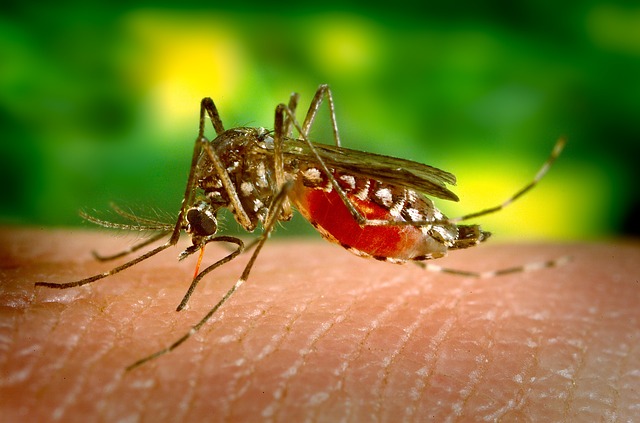
CRISPR may be used with gene drive technology to fight malaria in mosquitoes.
disease in humans. Pharmaceutical companies are using CRISPR to develop new classes of antibiotics and new drug delivery systems. Research is still at early stages, but many are hopeful that effective new tools for fighting disease will become a reality in the near future.
Agriculture
CRISPR is being used to produce drought-resistant crops, pest-resistant crops (which would decrease the need for pesticides), and crops that yield more food per acre. It has also been used to create strawberries with a longer shelf life and mushrooms that don’t brown, decreasing problems related to food waste.

Scientists have used CRISPR/Cas9 to snip out a tiny piece of DNA from one particular gene in a white button mushroom so that it is resistant to bruising or turning brown. Image: Adam Fagen/Flickr
Scientists have used CRISPR to prevent horn growth in cattle, which could end the potentially painful practice of dehorning and cauterization currently used by ranchers and dairy farmers. Other economically beneficial applications include sheep that grow longer wool, and animals that have greater muscle mass. In 2019, several Silicon Valley start-ups began using CRISPR’d animal cells to make lab-grown meat, which could reduce meat production methods that are damaging to the environment.[6]
Energy & The Environment
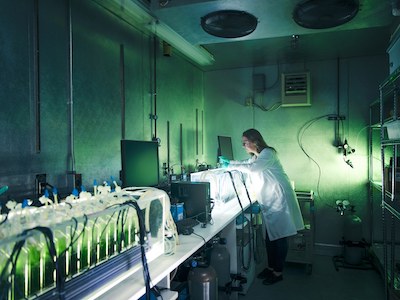
Scientists at Synthetic Genomics have used CRISPR to create an oil-rich strain of algae that can be used for biofuels. Image: Synthetic Genomics.
A team of scientists at Synthetic Genomics (a partnership between Harvard researcher Craig Venter and Exxon Mobil) have used CRIPSR to double the amount of fatty oils produced by algae, which is being made into biofuel.[7] Algae is renewable, does not require land, and absorbs significant quantities of carbon (because it is what algae uses for food). The use of CRISPR has the potential to help make algae biofuel more energy efficient, using less petroleum based energy to produce algae biofuel in greater quantities. CRISPR can also be used to modify a type of yeast that transforms sugars into hydrocarbons, potentially reducing the need to rely on petroleum-based plastics. Some researchers are looking at how CRISPR might be used in bioremediation, editing microbes to be more effective in taking up heavy metals, cleaning oil spills, or improving wastewater treatment.
What are the ethical concerns?
While CRIPSR has tremendous potential, many researchers and ethicists have urged caution and restraint. As with any emerging technology, there are potential risks, uncertainties, and unforeseen consequences.
Unforeseen consequences
Editing the genomes of living things may have unknown and unintended consequences. In the case of editing mosquitoes to prevent malaria, we do not necessarily know all of the ways this might impact other species that interact with mosquitoes or even entire ecosystems.
Concerns about off-target effects

One central concern about the use CRIPSR-Cas9 (particularly in humans) is the potential for “off-target” effects, or editing in the wrong place by mistake. This could deactivate essential genes, activate cancer-causing genes, or cause chromosomal rearrangements. While CRIPSR is far more precise than many other techniques and is currently being improved to increase precision, off-target effects can be difficult to find and their impacts can be quite serious. For this reason, some maintain that early trials should be limited to those who have life-threatening illnesses and for whom existing alternatives have failed.
Informed Consent
In the case of germline editing in humans, there is concern that those being edited cannot really consent to these modifications. Germline editing would occur in embryos and be passed down through future generations. Obviously, none of these individuals are capable of giving consent.
Even in the case of parents, it is not clear that they could fully consent on behalf of their children, as the potential consequences (or even what the risks are) is unknown. Many were alarmed by the highly publicized case of He Jianku,
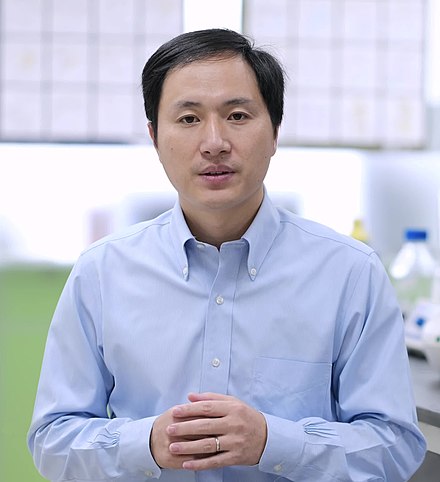
He Jianku claims that he has created the first genetically edited babies, who were born in November 2018.
the Chinese scientists who announced last year that he had genetically modified two twin embryos in order to see if they could be made immune to HIV (the twin girls’ father is HIV positive). It is not clear whether the parents in this case understood that there were alternative highly safe and effective methods for preventing the girls from being infected with HIV and it is impossible to know the risks from this procedure.[8]
Social Justice
There is also concern about who will have access to this technology, as well as the treatments and innovations that result. Historically, many new technologies are expensive and only those who are the wealthy have access to them. Thus, there is a concern that technological fixes to social problems often disproportionately benefit those who are well-off, reinforcing existing inequalities and failing to address the needs of those who are least well-off. In theory, one of the things that makes CRISPR so revolutionary is that it is cheap, but it is unclear whether this will translate into affordable interventions.
Worrisome applications
There are also concerns about the ways that CRIPSR might be applied (particularly if it is widely accessible and does not require significant resources to utilize). Some worry that CRISPR might be weaponized (for example, with synthetic gene drives that could be used to introduce a genetic mutation into a population very rapidly). Others worry that CRISPR might be used not just for therapeutic purposes, but also for genetically enhancing humans. There are concerns that this could even lead to eugenics. While most agree that these applications would not be ethical, it is unclear whether we can effectively regulate and protect against such uses, particularly as regulations and enforcement mechanisms may vary in different countries.
Looking Ahead
For several of these reasons, some researchers have called for a moratorium on human germline editing, until the technology is improved and there is less uncertainty.[9][10] This is challenging, however, as countries such as China have fewer regulations and began human trials several years ago.
While it is clear that new technologies such as CRISPR carry risks, uncertainties, and unknown consequences, the potential benefits are also significant. The challenge will be to proceed carefully and thoughtfully in a way that engages stakeholders in deciding how to regulate these technologies. Restraint, however, is likely to be challenging in a global context where some countries are forging ahead at lightning speed.
References
[1] Rodríguez‑Rodríguez, D. R., Ramírez‑Solís, R., Garza‑Elizondo, M. A., Garza‑Rodríguez, M. D. L., & Barrera‑Saldaña, H. A. (2019). Genome editing: A perspective on the application of CRISPR/Cas9 to study human diseases. International journal of molecular medicine, 43(4), 1559-1574.
[2]https://clinicaltrials.gov/ct2/show/NCT03399448?term=Crispr&rank=6
[3]https://clinicaltrials.gov/ct2/show/NCT03655678?term=crispr&rank=5
[4]https://clinicaltrials.gov/ct2/show/NCT03745287?term=crispr&rank=8
[5]https://clinicaltrials.gov/ct2/show/NCT03872479?term=crispr&draw=3&rank=27
[6]https://www.businessinsider.com/silicon-valley-startups-using-crispr-chicken-beef-memphis-meats-new-age-meats-2019-3
[7] Ajjawi, I., Verruto, J., Aqui, M., Soriaga, L. B., Coppersmith, J., Kwok, K., ... & Carlson, T. J. (2017). Lipid production in Nannochloropsis gaditana is doubled by decreasing expression of a single transcriptional regulator. Nature Biotechnology, 35(7), 647.
[8] https://www.thehastingscenter.org/crispr-china-parents-give-consent/
[9] LaBarbera, A. R. (2016). Proceedings of the International Summit on Human Gene Editing: a global discussion—Washington, DC, December 1–3, 2015. Journal of assisted reproduction and genetics, 33(9), 1123-1127.
[10] Reardon, S. (2015). Global summit reveals divergent views on human gene editing. Nature News, 528(7581), 173.
